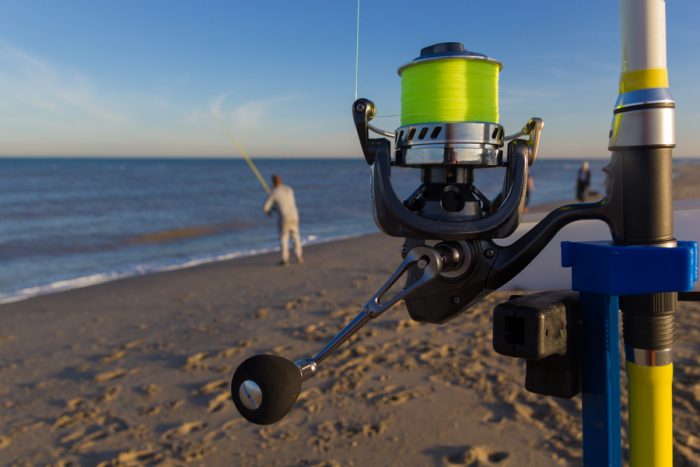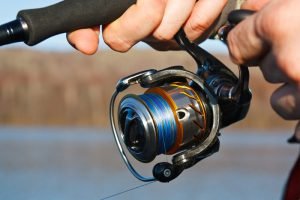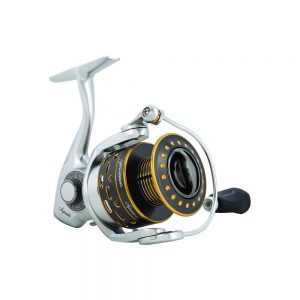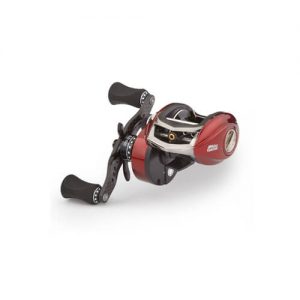The Different Types of Fishing Reels
History has it that the first known record of fishing reel was around 1195 AD in Chinese paintings and records. During the mid-1650s fishing reels first appeared in England. And by 1760s, equipment shops in London were selling gear-retrieve reels. In America, a Kentucky native, George Snyder, is credited with inventing the first fishing reel around 1820. A bait casting design that rapidly became popular among fishermen.
Fishing reel is a mechanical device designed to be fitted at the handle end of a fishing rod in which the line is rolled. These reels are more desirable because it helps make the task easier for fishermen’s. Anglers are provided with different types of fishing reels to choose from, they comes in different sizes and shapes and the following are the different types of fishing reels:
Spincasting reels: These reels have similar features of casting and spinning reel. Like the spinning reels, the reel has a fixed spool that allows the line to “drop-off” the spool on the cast. This also make the reel well-matched for terminal tackle and light lures, however they also work well with moderate heavy lines.
Spincasting reel is somewhat limited when it comes to a heavy test line, which means it will be difficult fishing for larger fish with this reel. Do not expect to land tuna with this reel; it is intended for undersized fish. I had experience with these reel during my early years, and it served me well, but as an adult with more experience I quickly moved on to baitcasting and spinning reels. Spincasting reel is perhaps easier to use than a spinning reel and often chosen by young first time anglers.
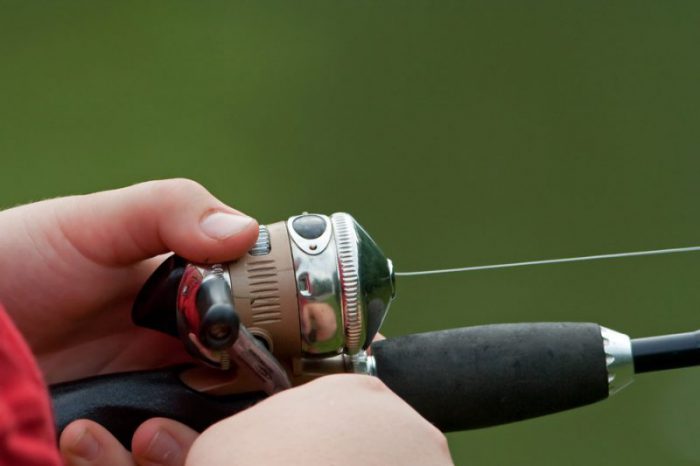
Baitcasting Reel: This is a reel that has a rotating spool and sits on a casting rod with a trigger knob. This is the exact opposite of a spinning reel, which sits at bottom of a spinning rod and with the line guides facing down. This reels are very difficult to use without practice, it is great for very accurate positioning of your baits and lures. It is difficult to cast very light weights and great for heavier lines and big fish amongst snags. This reel is favored by many professional fishermen. The weight of the bait and lure is used to drag the line from spool, while the thumb is used to control the line on a cast.
Baitcasting reel come in light and heavy versions, depending on your kind of fishing. This type of reel requires a little more skill than the spinners and will give you more control and accuracy in casting. This is a great reel for big game fishing, because it can handle heavier pounds test lines. One possible drawback of using a baitcasting reel is that it takes a while to get used to it. However, a little time and practice can resolve that problem.
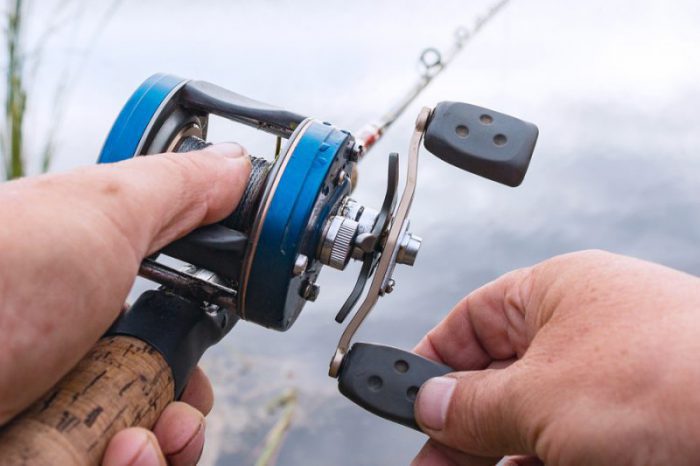
Spinning Reels: This is the easiest of the entire reels, with exception of a spincasting reel explained above. Spinning reels come in all sizes range from very light to very large, and large enough to combat oceanic fish. The great benefit of spinning reels is that they can cast very light weights, something that other fishing reel can’t easily do. Most spinning reel comes with a spare spool so that line weight can be replaced easily. Spinning reel is really good for both beginners and experienced fishermen.
What make this reel outstanding is it handle, if you are left-handed or right-handed, this reel does not matter because it handle is swappable between the left and the right sides to fit your needs. With other reels like baitcaster, there is no handles swapping, you either buy a dedicated left-hand model or a dedicated right-hand model and that is what you are stuck with. And also spinning reel is a good option for experienced angler looking for versatility, who may wish to fish live bait or use light artificial lures.
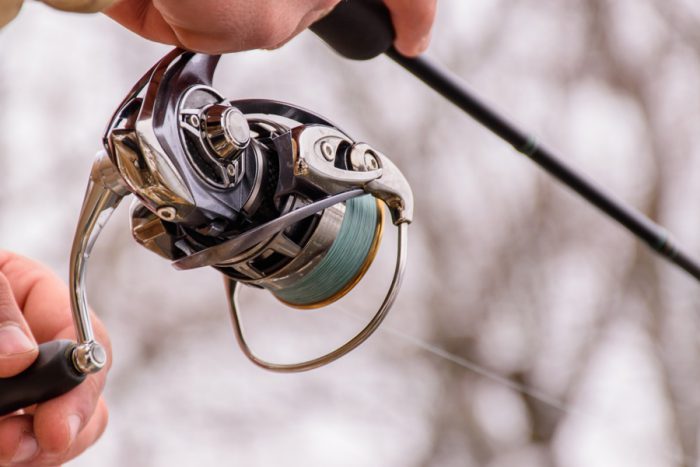
Fly fishing reels: This is a special reel use with fly rods. It used to be exclusively for trout, salmon and steelhead fishermen, but now it is used even for saltwater applications. It has a good drags system to fight the fish to succumb. It is in the same category with the Centerpin and Mooching reels, but they are used differently.
Fly fishing reels are reliable simple, and durable, It is not uncommon to see some fly fishing reels that have existed for more than 40 to 50 years that are still used today. So, if you are looking for a unique investment in fishing reel, then fly fishing reel is the best you can buy.

Centerpin Reels: This is the third most common kind of fishing reel, and is a very popular option for those who are interested in fly fishing. Centerpin Reels is a type of fishing reel that runs freely on its axle. It large diameter spool usually sits vertical to the fishing rod and allows for long distance casts.
When assessing the mechanical construction of it unit, you will discover that the reel is quite simple as far as it functionality is concerned. Fishermen often use this reel when they need to have a high level of control over the drag of their fishing line. The spools attached to these reels are usually large, so there is a high level of potential resistance and consistency when it comes to adjustments.
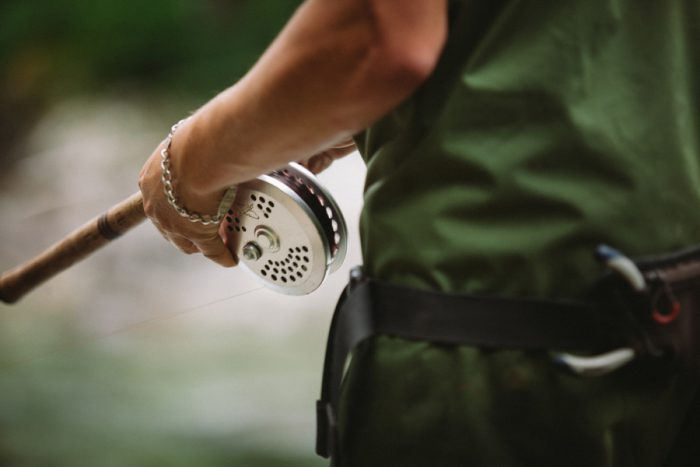
Surf fishing reels: These are essential pieces of fishing tackle that can improve your surf fishing success. Surf fishing is popular sport for those who live near large bodies of water like ocean. It involved fishing mainly from the beach which generally requires a longer cast. When looking for surf fishing reels, you will have to look for the one that has the ability for long casts, and also the capacity of reeling in large fish. Surf fishing reels are designed to withstand the harsh conditions of the surf, which saltwater, sand and sun are just a few.
A good surf fishing reel is made of either graphite, aluminum, or both materials, and have a sealed steel stainless ball bearings for the highest corrosion resistance. In addition to it durability in the surf, the reel must be able to hold a lot of fishing lines and provide long cast. Surf fishing reels are very versatile because they are used for a wide range of fishing techniques and fish species.
